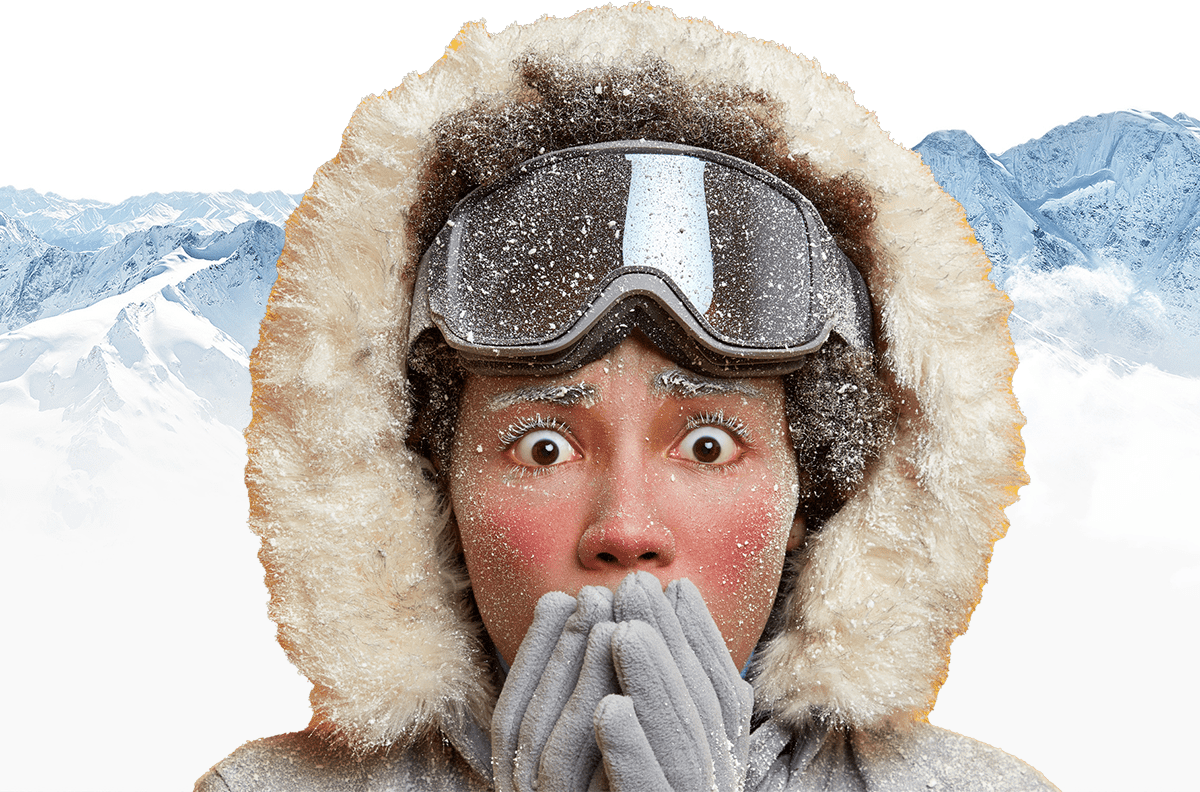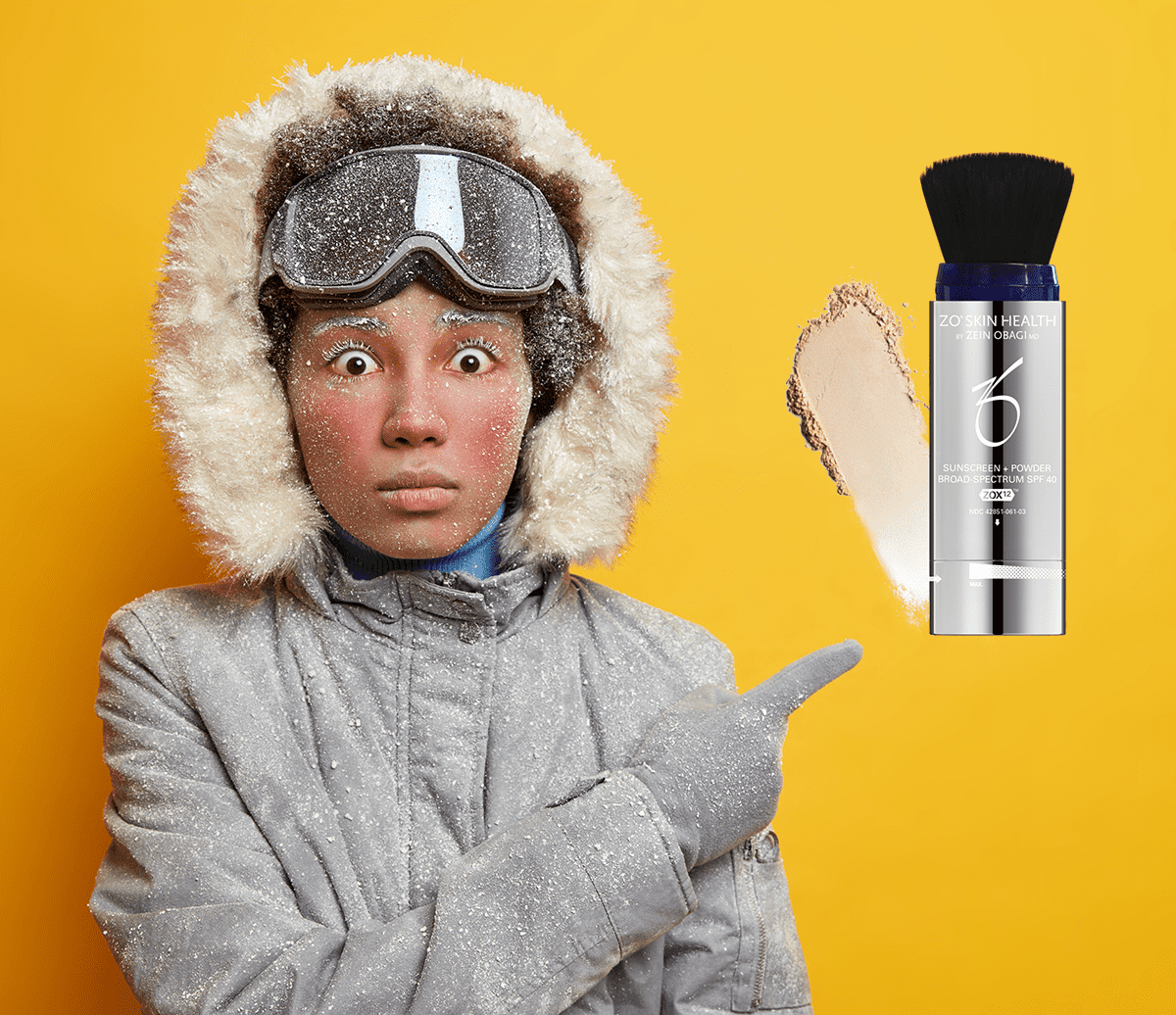
When we decided to move from the UK to Whistler, British Columbia, my husband and I meticulously researched everything we thought we needed to know about living in a mountain town. Life in the mountains was everything we expected and more. But… what I didn’t expect was just how much, and how quickly my skin would dry out!! And then winter truly arrived…
This week of the eight coldest places in the world, seven of them are in Canada, and four of those seven are in British Columbia!!! We are in the midst of an arctic outflow, with wind chill temperatures in the area of -30 to -40 celsius. You’re breaking out in a glorious combination of spots and dry skin patches. Your glow? What glow, you don’t have even a hint of a glow. This is winter skin. And it can be awful. But why does it happen? And what can you do about it, beyond bundling a scarf halfway up your face?
Winter ravaged skin, or as we like to call it at Whistler Medical Aesthetics® ‘Mountain Skin’ is down to a some key factors: the drop in temperature, a further drop in humidity, and the process of going from outside cold to indoor heating. There is a scientific term for this in Dermatology. The cold air and low humidity increases what’s called trans “Trans Epidermal Water Loss” (TEWL), which causes the skin barrier to degrade.
So what is TEWL
It’s pretty common knowledge that our skin is composed of multiple layers made up of the epidermis (top), dermis (middle), and hypodermis (bottom). The epidermis is the outermost layer of skin, which is exposed to all of the environmental factors we experience on a daily basis. Trans Epidermal water loss refers to the loss of water that passes through the epidermis and evaporates into the air.
Now, don’t be alarmed, TEWL is a totally natural process, and it happens to everyone, everyday. It’s your bodies way of regulating its water content through the skin. Where it needs attention, or where it can become concerning is when TEWL is exacerbated by things like low-humidity weather, wind, cold, especially very cold weather cycles, which all causes damage to the skin. So living in a land-locked, high-altitude environment like Whistler combined with extreme temperature swings in short periods of time and less oxygen in the atmosphere, and you’ve got a recipe for skin damage.
How to protect, prevent and treat Mountain Skin
Prevention is always, always going to be better than trying to undo the damage. We know that in a perfect world, you are either just now learning about TEWL, your own skin, and how the weather and the mountains can damage your skin, so lets work on not letting it get worst, protecting your skin moving forward and then think about potential treatments; which will vary according to age, skin type, amount of damage and so on.
If your skin is losing too much water, you may notice dryness, flakiness, dullness, itchiness, rough texture and visible fine lines. It’s also thought that TEWL plays a big role in inflammatory skin conditions like acne and eczema.
You can’t completely stop TEWL, but you can minimize it and promote a healthy balance of water in your skin. Here are a few tips for reducing TEWL.
Get a good moisturizing routine.
Avoid harsh facial cleansers – Heavy-duty, high-pH face washes and soaps can strip the skin’s moisture and make TEWL worse.
Choose high quality (ideally clinically proven) skincare product’s
Use a humidifier

Physician Grade Skincare - Clinically Proven goodness for the skin
One of our absolute favourite products at WMA® is the Sheald Recovery Balm from iS Clinical.
SHEALD Recovery Balm can be used directly on cut or raw skin before a scab has formed… It creates an anti-microbial barrier that activates repair with amino acids and lipids, and it stops pain and itching too. SHEALD Recovery Balm formula dramatically replenishes hydration to dry, sensitive, or compromised skin. This fortifying remedy works overtime to help support the skin’s function while soothing, curative botanicals relieve the discomfort of dry, distressed, and post-procedure skin. Clinically proven to provide environmental protection, SHEALD Recovery Balm is an excellent treatment for damaged skin and doubles as a protective moisturizer at any time.

It's not just the cold....
Anyone who knows our clinic, knows how much we talk about UV damage, and how much we always emphasize the need to wear a high quality SPF every single day.
Our favourite range is the clinically proven, physician skincare range from Zo Skinhealth, especially the new ‘Broad Spectrum’ range. For sensitive and post-procedure skin, this lightweight, non-irritating mineral sunscreen, with ZOX12® complex, protects against damaging effects from UVA/UVB and IR-A rays, and from HEV light.
The new brush on SPF powders are amazing, and easy to carry and reapply throughout the day. Surprisingly great value as well. Sunscreen + Powder SPF 40 is powered by Triple-Spectrum Protection® and exclusive ZO® antioxidant technology to deliver superior skin defense with a hint of advanced colour pigments. Some of the many benefits include
- Maintains hydration and absorbs surface oil to minimize shine
- Provides buildable coverage with color-enhancing pigments + light reflecting minerals for a luminous glow
- Leaves skin feeling smooth
- Can be applied over makeup and re-applied throughout the day
- Densely packed, ultra-soft bristles provide a seamless + even application of powder and is designed to prevent shedding + fraying.






Recent Posts
Sun Damaged Skin: Signs, Causes & Treatment
Whistler Best Dining and Beauty Boosts: Pairing Great Food with Skin-Loving Treatments
Top Ways to Improve (and Enjoy) Your Whistler Ski Vacation